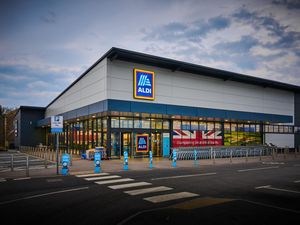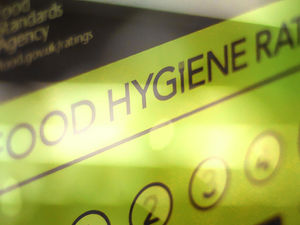Inflation at five-year high: Why Shropshire businesses face paying an extra £7 million in rates
Businesses in Shropshire are facing paying out more than £7 million extra in rates next year after inflation soared to a five-year high.
The spiralling figure provides a fillip for pensioners but headaches for business owners who are already under pressure because of spiralling rates.
September’s inflation figures are used to fix state pension rates, benefits payments and business rates.
The Retail Price Index, which is the figure used to set next year’s business rates, was unchanged last month at 3.9 per cent.
Analysis of the figures by rates specialist CVS shows that the 11,479 rates-paying businesses in Shropshire will face a cumulative hike in their rates of almost £4.2 million at that figure.
The issue has been concerning businesses across Shropshire and Mid Wales all year, with some calling it scandalous.
Bosses at The Salopian public house in Shrewsbury said sharp rises were leaving them fearing for the future of the business.
In Telford & Wrekin, 4,853 businesses will have to fork out an extra £3.32 million – and average of £684 more per business. Around England, businesses are braced for a rates rise of £1.1 billion from next April.

Mark Rigby, chief executive of CVS, said Chancellor Philip Hammond needs to be “bold” when he delivers his Autumn Budget on November 22, and freeze rate rises next year.
He said: “Property taxes in Britain are already the highest of any European nation both as a percentage of GDP and overall taxation.
“Brexit is driving inflation and businesses are holding off from investing because of the current economic climate of uncertainty. Insolvencies are expected to rise over the next two years.
“To plough ahead with such rate rises would be foolhardy and the Chancellor must be bold in his vision with a freeze.
“I would urge all businesses in Shropshire to check that their assessment is fair and accurate.”

CVS said the pressure on businesses came at a time when more and more were being hauled before the courts for non-payment of rates.
It submitted Freedom of Information Requests to all councils across the country, and found that 757 businesses in Shropshire received summonses to appear before magistrates in the last financial year. That is seven per cent of the county’s business population.
It said Telford & Wrekin Council did not respond to its FOI request.
The figures also provide a fresh headache for benefits claimants.
The Government has frozen working-age benefuts in cash terms until March 2020, and with the Consumer Price Index, another key measure of inflation, hitting a five-year high of three per cent the value of the money going out to benefits claimants is dwindling.
The latest inflation figures show that households have been feeling the pinch as the Brexit-hit pound bumps up everyday prices and wage growth tracks behind inflation.
ONS head of inflation Mike Prestwood said: “Food prices and a range of transport costs helped push up inflation in September.
“These effects were partly offset by clothing prices that rose less strongly than this time last year.”
The jump in CPI leaves Bank of England Governor Mark Carney on the brink of having to write a letter to Chancellor Philip Hammond explaining why inflation is rising so rapidly.
The Government has set an inflation target of two per cent, with protocol dictating that Mr Carney must contact the Chancellor if inflation exceeds three per cent or falls short of one per cent.
The figures provide positive reading for pensioners, however, because their annual payouts are also linked to the September figures.
The triple lock on state pensions ensures that recipients are guaranteed a minimum increase each year by whichever is the highest of September’s inflation rate, average earnings growth or 2.5 per cent.
Earnings growth has been bobbing around the two per cent mark, so the new three per cent inflation figure will be used to calculate the increase in the basic state pension from next April.
Tom Waters, a research economist at the Institute for Fiscal Studies (IFS), said: “This morning’s inflation figure, taken together with the latest inflation forecasts, means that the four-year freeze on most working-age benefits is now expected to cut the benefits of 10 million families by £450 a year in real terms – up from £320 back when the freeze was first announced.
“The extra £130 loss is not the result of any deliberate decision by the Government – it is the consequence of inflation being higher than was expected when the policy was set.
“This illustrates a problem of setting benefit rates far in advance in cash terms – it leaves the actual generosity of future benefits sensitive not only to the Government’s active decisions but also to unexpected moves in inflation.
“It means that the risk of higher inflation – a risk that has now materialised – is being borne by working-age benefit recipients.”
Inflation explained - why these figures matter:
The latest inflation figures do not mean that food and fuel prices are about to swirl higher – it means that they already have.
Inflation is a backwards-looking measurement which allows us to see how prices have been changing over recent months. However, the Governor of the Bank of England Mark Carney has warned that costs are likely to continue rising.
The reason the latest inflation figures have excited interest is because they are also used to determine other financial issues – things like pensions and business rates.
They also provide a point of comparison to see whether other issues are measuring up.
In the case of earnings growth, for example, inflation is running about one percentage point higher than wages – so while people may find there’s more in their pay packet, it might not be going quite as far because the items they are buying are even more expensive.
Many retailers have been trying to keep a lid on price increases despite the massive changes to the value of the pound over the course of the last 18 months, at a cost to their own margins.
But the slow upward creep of prices shows that shoppers are beginning to take the strain.
There are two figures used when looking at inflation – RPI and CPI. They are calculated in different ways, while RPI also includes costs such as mortgage increases and council tax payments.
CPI is based on the value of a basket of goods including food and drink, transport costs, household goods and the like.
Prices are likely to continue increasing, Mr Carney said, because of the ongoing effect of the weak pound. Sterling is worth 14 per cent less against the euro and 10 per cent less against the US dollar than before the Brexit vote.
It may also put pressure on the Bank to increase interest rates, which would potentially boost families’ spending power because they would make more on their savings, but would also increase borrowing rates.




